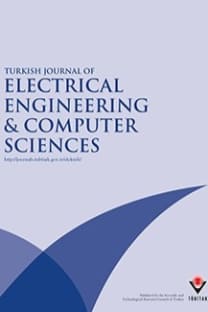MPPT of PV array using stepped-up chaos optimization algorithm
Stepped-up chaos search, maximum power point tracking, photovoltaic array, optimization algorithm
MPPT of PV array using stepped-up chaos optimization algorithm
Stepped-up chaos search, maximum power point tracking, photovoltaic array, optimization algorithm,
___
- From Figures 8–13, we can see that, while the environmental conditions change, the voltage and current of the PV array quickly respond and overshoot less; the PV system will rapidly track the change smoothly and ultimately steadily around the new MPP. 5. Conclusion
- ISSN: 1300-0632
- Yayın Aralığı: Yılda 6 Sayı
- Yayıncı: TÜBİTAK
Fuzzy sliding mode control applied to a doubly fed induction generator for wind turbines
SID AHMED EL MEHDI ARDJOUN, Mohamed Abid
Optimal integration of hybrid (wind--solar) system with diesel power plant \newline using HOMER
Muhammad Noman SIDDIQUE, Aftab AHMAD, Muhammad Kashif NAWAZ, Syed Basit Ali BUKHARI
Yingjie WANG, Haiyuan LIU, Xuelong HAN, Kangan WANG
An improved incremental conductance based MPPT approach for PV modules
Mustafa Engin BAŞOĞLU, BEKİR ÇAKIR
Impact of large-scale installation of LED lamps in a distribution system
Sohel UDDIN, Hussain SHAREF, Olav KRAUSE, Azah MOHAMED, Mohammad Abdul HANNAN, Naz Niamul ISLAM
Serkan ABBASOĞLU, Akinola Adeyinka BABATUNDE
Rajamanickam Manickaraj SASIRAJA, Velu Suresh KUMAR, Sankaralingam PONMANI
Aleksandar JANJIC, Suzana SAVIC, Lazar VELIMIROVIC, Vesna NIKOLIC
Integration of wind power for optimal power system black-start restoration
